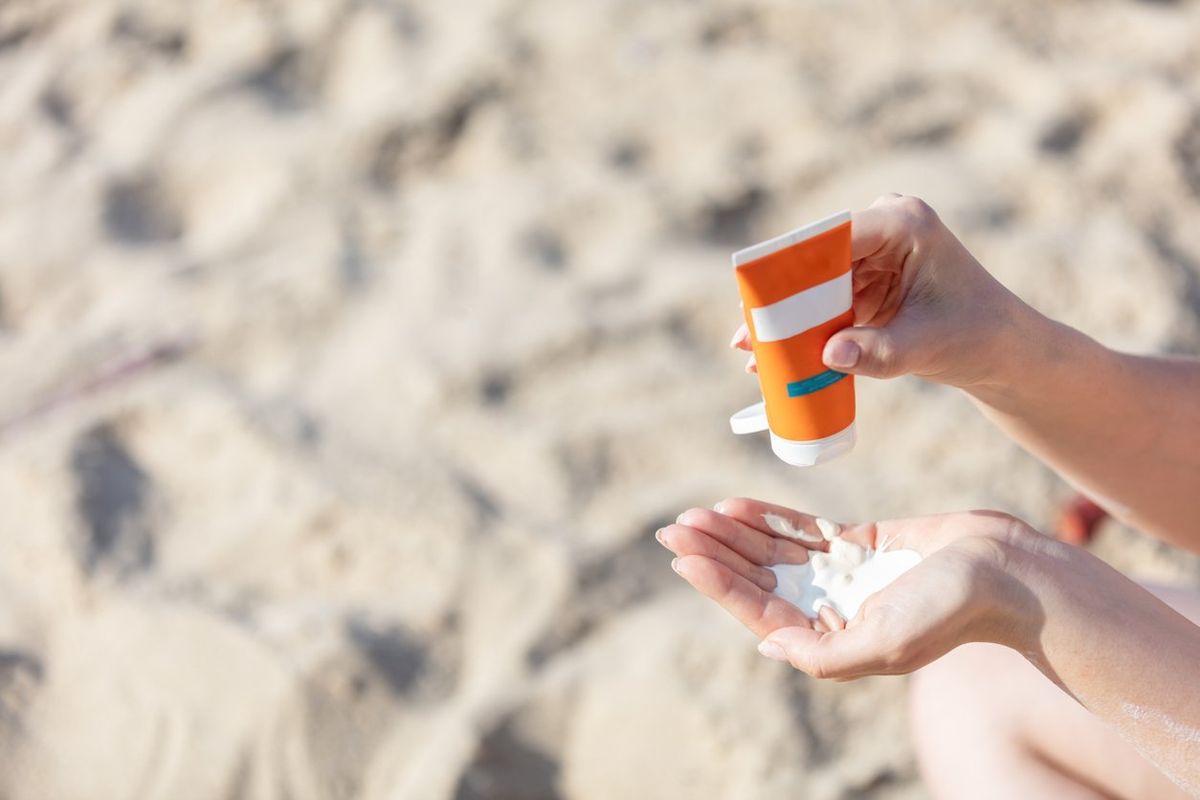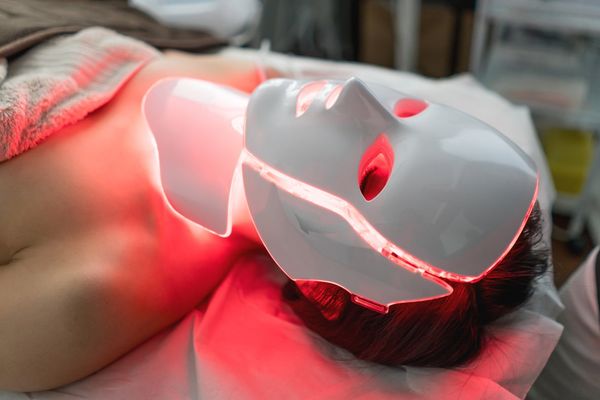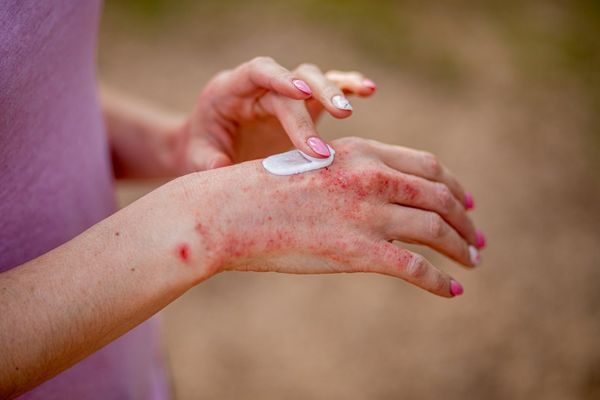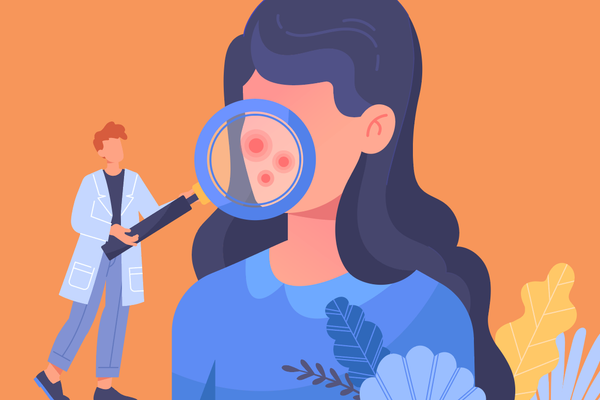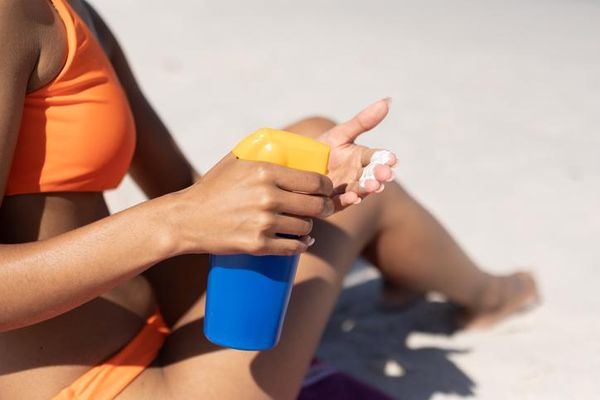When was the last time you thanked your skin for everything it does for you? Your body’s largest organ is your greatest protector. Your skin also regulates body temperature, shields you from dangerous germs and provides sensation among other important things.
Despite your skin’s crucial role in life, we’re not doing everything we can to protect it from the sun’s ultraviolet (UV) rays that cause cancer.
The importance of sunscreen
Skin cancer is the most common type of cancer in the U.S. and rates of melanoma — the deadliest form of skin cancer — are on the rise. This is especially true for women and people assigned female at birth. In fact, research shows cases of melanoma have increased by about 3% per year for women ages 50 and older.
Given the rising rates and seriousness of skin cancer, protecting yourself from harmful UV rays is more important now than ever. “Regular sunscreen use is the most effective tool we have to reduce skin cancer rates,” said dermatologist Lauren Fine, M.D.
Sunscreen helps protect your skin from harmful rays, prevent sunburn and minimize long-term sun exposure damage. It also can prevent early signs of aging caused by UV exposure, such as wrinkles, dark spots and loss of skin elasticity.
What you may not realize is that sunscreen should be worn whenever you’re outside — 365 days a year — not just in the summer or when you can see the sun. UV radiation is always around, even on cloudy days or when there’s snow on the ground. In fact, snow can reflect up to 80% of UV rays, which increases the chance for sunburns and skin damage.
Sunscreen is a crucial component in a comprehensive sun protection plan for everyone, no matter whether you tend to tan rather than burn and no matter what your skin color is. Contrary to popular belief, people of color are vulnerable to sun damage and are more likely to be diagnosed with skin cancer at advanced stages. They are also more likely to die from the disease compared to white people.
To make it easy on yourself, try bringing products with SPF into your daily routine (lotions, hand creams, makeup, etc.). If you’re spending an extended amount of time outdoors, reapply SPF 30 to 50 every two hours.
The two main types of sunscreen are:
- Physical mineral-based sunscreen: Formulas containing titanium dioxide, zinc oxide or both
- Organic chemical-based sunscreen: Formulas that contain the organic chemical active ingredients such as avobenzone, homosalate, octisalate, or octocrylene
Also, before using sunscreen, check the expiration dates. After a few years, sunscreens break down and lose their strength and may not work as well. This also happens if they’re stored in areas of extreme heat or cold, or sitting out in direct sunlight for long stretches of time.
More schooling about sunscreen is needed
Despite the fact that sunscreen is an important tool in helping to prevent skin cancer, there’s a lot of misinformation about sunscreen online.
“A lot of the information coming up on social media in the last few years has been a big step back in my opinion,” Fine said. “It's people going on rants about how horrible sunscreen is and not even acknowledging that skin cancer rates are on the rise.”
One recent example: DIY sunscreen. Many of the at-home recipes shared online include the active ingredient zinc oxide powder, but without the proper testing, you can’t be sure that you have the right amount needed to protect your skin or know how long the ingredients may work. And that can lead to exposed skin, sunburns and an increased risk for skin cancer, which defeats the whole purpose of putting it on in the first place.
Read: Should You Make Your Own Skincare Products? >>
Social media aside, more fact-based education about the efficiency of sunscreen is needed in the U.S. overall. One recent survey found nearly 3 out of 10 Americans said they only use sunscreen when encouraged by other people. And nearly 3 out 10 of participants ages 18 to 26 didn’t believe that suntans cause skin cancer. To be clear — they do. “There’s no such thing as a healthy tan and there's no reason you should be going out in the sun unprotected,” Fine said.
This message needs to be relayed loud and clear beginning in childhood since childhood sunburns are more likely to lead to skin cancer than adult sunburns. And parents play an important role in educating their children about the importance of sunscreen.
Inaccurate messaging about the importance of sunscreen can turn deadly. An increase in awareness and prevention can help save lives.
To get the facts about sunscreen and to verify what you see on social media, visit websites of reputable organizations, such as the American Cancer Society and the Melanoma Research Foundation, or talk to your healthcare provider about options that are best for your skin and your lifestyle.
Remember: Your skin is depending on you.
Resources
This educational resource was created with support from Kenvue, a HealthyWomen Corporate Advisory Council member.
- True or False? Sun Safety ›
- 10 Things You Must Know to Enjoy the Sun Safely ›
- Fast Facts: What You Need to Know About Skin Cancer ›
- Is Your Sunscreen Causing Breast Cancer? ›

